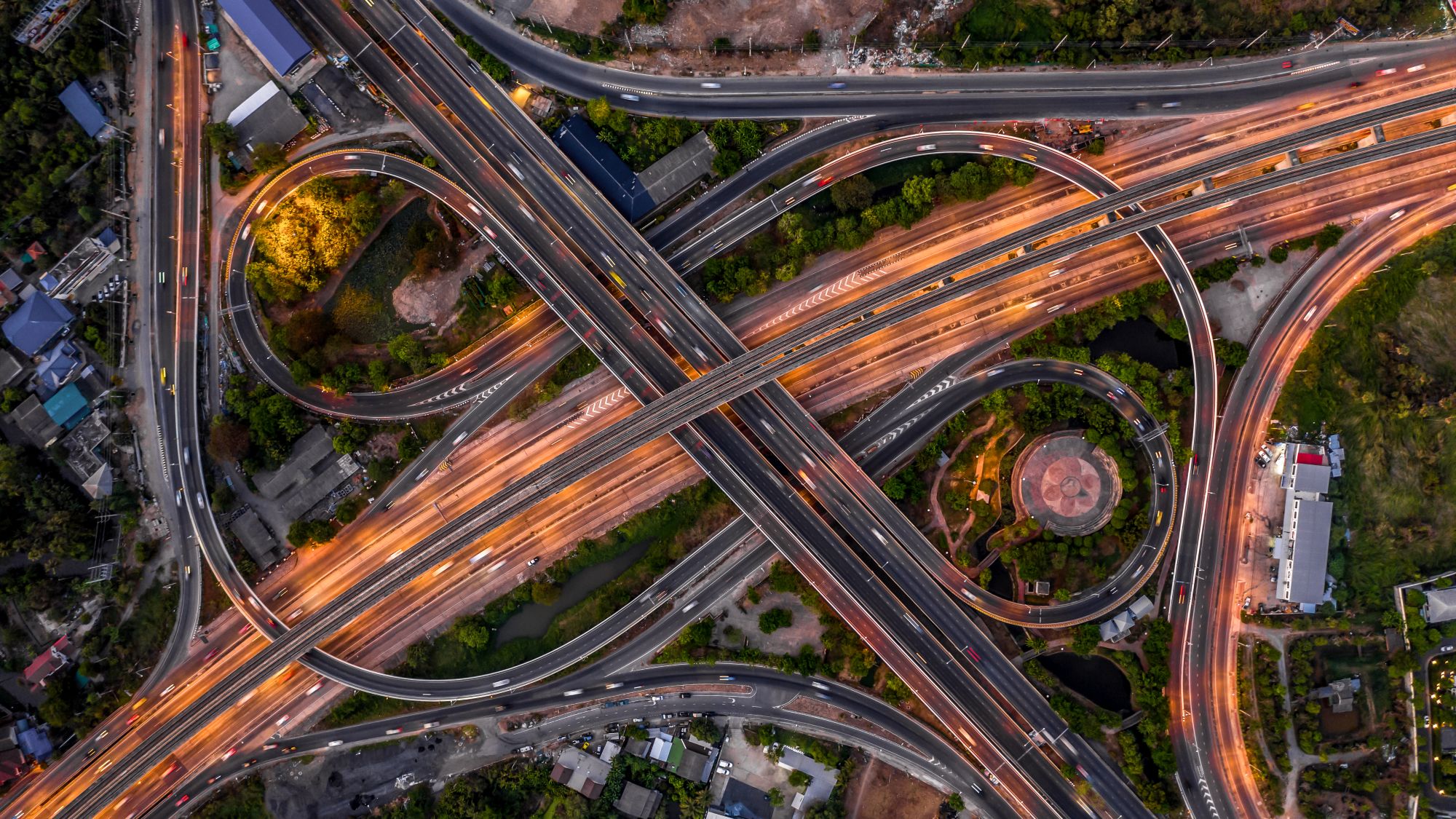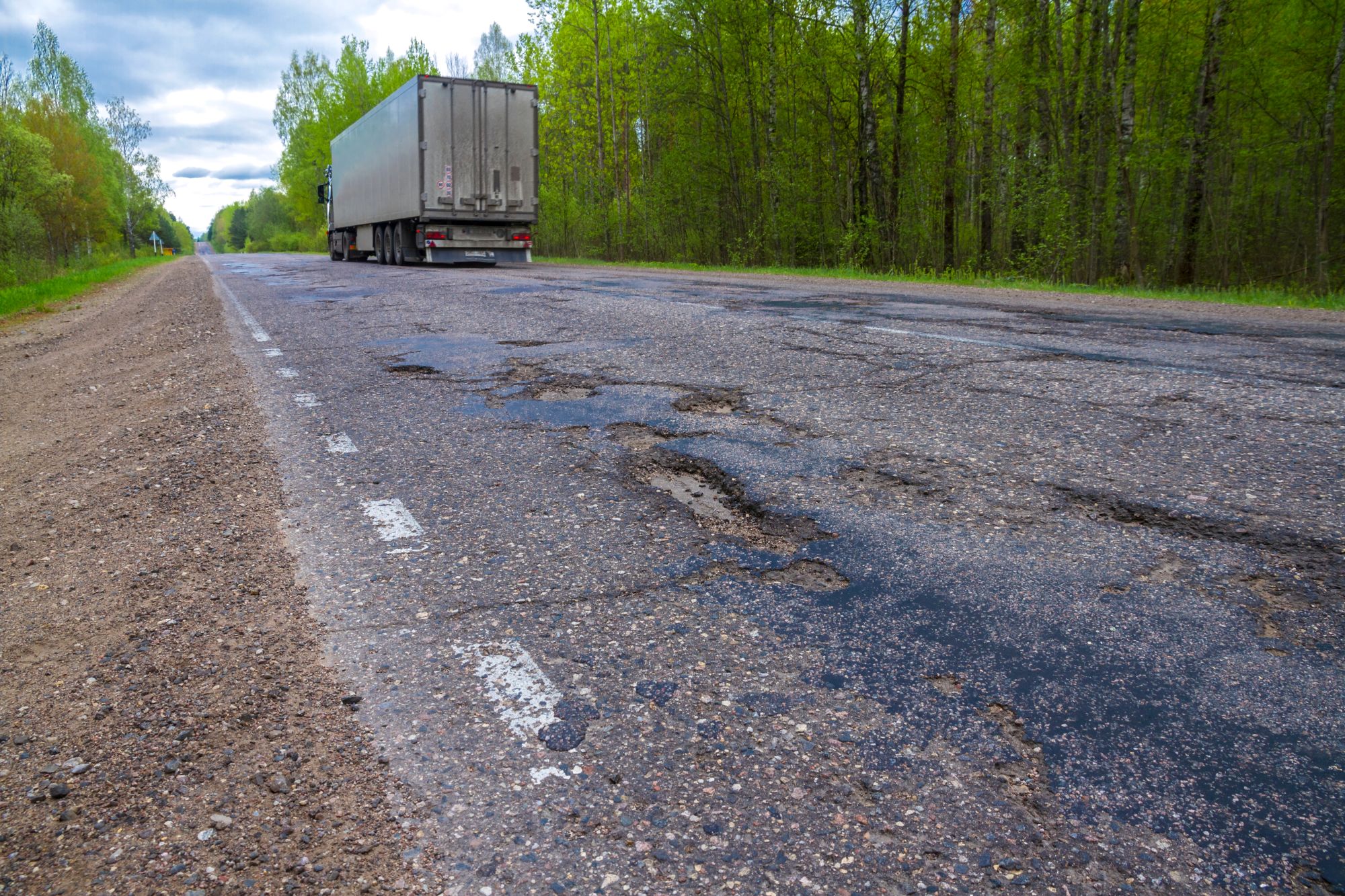
Guest
Kaip JK infrastruktūros finansavimas gali paveikti judumo pramonę
Sukurta: 02-07-2025
•
Atnaujinta: 03-07-2025
Po daugelį metų trukusių nevienodų investicijų ir didėjančių spūsčių JK vyriausybė įsipareigojo per ateinantį dešimtmetį skirti daugiau nei 700 mlrd. svarų sterlingų infrastruktūrai - didžiąją jų dalį - šalies keliams. Dešimties metų infrastruktūros strategijos poveikis komerciniams vairuotojams ir platesnei judumo pramonei gali būti permainingas - nuo naujų krovinių vežimo koridorių iki pažangiausių skaitmeninių eismo sistemų.
Keliai pasiekia lūžio tašką
Keliai yra tik viena iš Jungtinės Karalystės transporto priemonių visumos dalių, tačiau jais vežama didžioji dauguma krovinių. Vyriausybės duomenimis, 81 proc. vidaus krovinių ir 75 proc. importo ir eksporto vežama keliais, todėl tai yra Jungtinės Karalystės logistikos ir ekonomikos pagrindas.
Nors pagal ilgį sudaro tik kiek daugiau nei du procentus JK kelių tinklo, strateginiu kelių tinklu (SRN) atliekama 34 proc. visų kelionių keliais, įskaitant daugelį svarbiausių, daug krovinių gabenimo laiko reikalaujančių maršrutų. Jais važiuojantiems vairuotojams jų būklė ir pralaidumas daro tiesioginę įtaką saugai, efektyvumui ir pristatymo rezultatams.
Tačiau Kelių būklės indekso (RCI) duomenys rodo, kad per ateinančius 12 mėnesių Anglijos ir Velso kelių tinkle gali prireikti maždaug 24 500 mylių, t. y. daugiau nei kas dešimtos mylios.
Keli pastaruoju metu avariniu būdu uždaryti tiltai dar labiau atskleidė, koks pažeidžiamas tapo tinklas. Kai kuriose vietovėse dėl įtrūkusių atraminių konstrukcijų ir dešimtmečių senumo betono susidarė pavojingos sąlygos visiems eismo dalyviams, ypač sunkiasvorėms krovininėms transporto priemonėms, kurių svoris neretai apribojamas pirmiausia arba kurios priverstos keisti maršrutą.
Vyriausybė, įgyvendindama infrastruktūros strategiją, įsteigė naują 1 mlrd. svarų sterlingų vertės fondą, iš kurio bus remontuojami ir rekonstruojami susidėvėję tiltai, pervažos ir estakados. Tai sveikintinas žingsnis, atspindintis didėjantį pramonės spaudimą. Profesionaliems vairuotojams tai gali reikšti, kad sumažės apvažiavimų, staigių apribojimų ir laiko, sugaišto dėl šiuolaikinei logistikai nepritaikytos infrastruktūros.
Tačiau sauga - tai ne tik katastrofiškų gedimų išvengimas. Taip pat svarbu užtikrinti ilgalaikį atsparumą - užtikrinti, kad keliai, tiltai ir nuovažos būtų tinkamai prižiūrimi, kol dar netapo pavojingi. Šis atnaujintas dėmesys techninei priežiūrai rodo, kad kelių priežiūra pagaliau gali pradėti atitikti nuo jų priklausančių transporto priemonių mastą, dydį ir greitį.

Duobių problema
Nors pranešimai apie svarbius projektus dažniausiai skelbiami, didžiausią poveikį vairuotojams dažnai daro kasdienė kelio dangos būklė. Vežėjams, dirbantiems krovinių pervežimo srityje, duobės yra daugiau nei nepatogumas - tai nuolatinis pavojus saugumui ir brangiai kainuojanti našta.
Dėl nuolatinio važiavimo nelygiu paviršiumi sunkiasvorės transporto priemonės labiau dėvisi, gadinamos padangos ir pakaba, be to, didėja vairuotojų nuovargis. Kai kuriais atvejais dėl duobių pažeidimų transporto priemonės buvo priverstos išvažiuoti iš kelio, kad būtų atliktas skubus remontas, dėl to sutriko krovinių pristatymas ir buvo pažeisti paslaugų lygio susitarimai.
Vairuotojams kyla asmeninė rizika. Bandydami išvengti duobių, ypač siauruose ar judriuose keliuose, galite imtis pavojingų manevrų. Pridėjus prastas oro sąlygas, ribotą apšvietimą ar įtemptą pristatymo grafiką, rizika tik padidėja.
Vyriausybė, vykdydama platesnio masto iniciatyvą infrastruktūros srityje, pagal Permainų planą skyrė 1,6 mlrd. svarų sterlingų vietos infrastruktūrai, įskaitant duobes, sutrūkinėjusią dangą ir susidėvėjusius važiuojamosios dalies kelius, atnaujinti. Siekiama, kad keliai būtų saugesni ir patikimesni, ypač keliuose, kuriais vežami kroviniai.
Tai neišspręs problemos per vieną naktį, tačiau tai reiškia, kad keičiasi prioritetai - pripažįstama, kad vairuotojų gerovė prasideda nuo pagrindinių dalykų ir kad saugi ir patogi kelionė priklauso nuo gerai prižiūrimų kelių.
Transporto parkai gali pasinaudoti mažesniu neplanuotų remontų skaičiumi, mažesnėmis draudimo išmokomis ir vairuotojų prastovomis. Vairuotojams tai reiškia, kad mažiau sukrėtimų, mažiau streso ir mažiau rūpesčių ilgos pamainos metu.
Patikimas tinklas
Vairuotojų gerovė yra svarbiausias šiuolaikinio transporto pokalbio elementas. Ilgos darbo valandos, vėluojantys tvarkaraščiai ir netinkamos sąlygos padarė savo. Tačiau naujausi vyriausybės planai teikia vilties sukurti saugesnį ir geriau sujungtą tinklą.
Visoje Jungtinėje Karalystėje vairuotojų darbo vietos sunkiai patenkina paklausą. Automobilių stovėjimo aikštelės dažnai būna ribotos, paslaugų pasiūla ribota, o daugelyje poilsio aikštelių trūksta komforto ir saugumo, ypač tolimųjų reisų vairuotojams. Todėl vyriausybė taip pat gerina vairuotojų aplinką: daugiau saugių automobilių stovėjimo aikštelių, geresni gerbūvio patogumai ir planavimo reformos, kad būtų paspartinta naujų aikštelių plėtra.
Tuo pat metu sparčiau investuojama į elektrinių ir vandenilinių sunkvežimių įkrovimo ir degalų papildymo centrus. Pavyzdžiui, "Moto" įsipareigojo 23 greitkelių vietose įrengti daugiau kaip 300 sunkiasvorių sunkvežimių elektrinių įkroviklių, o Ašfordo sunkvežimių stovėjimo aikštelė pertvarkoma į pagrindinį krovinių įkrovimo centrą, skirtą kroviniams, gabenamiems per Lamanšo sąsiaurį. Šiais įrenginiais siekiama ne tik užtikrinti transporto priemonių judėjimą, bet ir suteikti vairuotojams saugias, gerai įrengtas vietas, kuriose jie galėtų pailsėti ir įkrauti energiją.
Jei jūsų vairuotojai ieško saugios vietos sustoti, mūsų "intruck" programėlėje jie gali rasti ir užsisakyti poilsio stoteles visoje Jungtinėje Karalystėje ir Europoje. [Sužinokite daugiau ir atsisiųskite ją čia] (https://intruckapp.com/).

Spūsčių kaina
Spūstys, nenuspėjami maršrutai ir spaudimas spėti į pristatymo terminus didina vairuotojų stresą ir nuovargį, todėl kelyje darosi pavojingiau.
Didelės infrastruktūros atnaujinimo priemonės, tokios kaip žemutinės Temzės pervaža, A66 magistralės tiesimas ir M60 Simisterio salos patobulinimai, skirtos sumažinti spūstis ir avarijų riziką kai kuriose labiausiai žinomose Jungtinės Karalystės susispaudimo vietose.
Be to, vis dar stengiamasi diegti skaitmenines priemones, kurios padėtų saugiau ir sklandžiau keliauti. Realiuoju laiku siunčiami eismo įspėjimai, išmaniosios aptikimo sistemos ir geresnis eismo valdymas padės automobilių parkų vadovams ir vairuotojams greitai reaguoti į trikdžius ir prireikus keisti maršrutą.
Nacionalinė greitkelių skaitmeninių kelių programa jau kuria pagrindą, o išmanioji infrastruktūra gali anksčiau aptikti pavojus, išmaniau valdyti eismo srautus ir aiškiau informuoti apie naujausius duomenis realiuoju laiku.
Ką tai reiškia mobilumui?
Žingsnis į priekį judumo ir vairuotojų gerovės srityje. Koordinuotos nacionalinės pastangos spręsti Jungtinės Karalystės infrastruktūros atsilikimo problemą ir modernizuoti kelius taip, kad jie būtų naudingi vairuotojams, kurie jais naudojasi labiausiai.
Tikrasis išbandymas bus pristatymas. Norint, kad finansavimas virstų apčiuopiamais patobulinimais, reikės įsiklausyti į vairuotojų nuomonę, mokytis iš tiesioginės patirties ir vertinti sėkmę pagal tai, kaip jaučiamasi keliuose, o ne tik pagal tai, kiek jie kainuoja.
"Ši nauja investicijų banga skirta ne tik kelionių laikui sutrumpinti, - sako Stuartas Willettsas, SNAP JK verslo plėtros vadovas. "Tai reiškia, kad reikia sukurti transporto tinklą, kuris padėtų užtikrinti vairuotojų gerovę, veiklos efektyvumą ir pereiti prie švaraus judumo. Negalime sulaukti rezultatų."
Norite sužinoti, kaip mobilumas vystosi jūsų gyvenamojoje vietoje?
Naudokitės SNAP žemėlapiu, kad rastumėte paslaugas ir sprendimus netoli jūsų - nesvarbu, kokiu keliu važiuojate.



